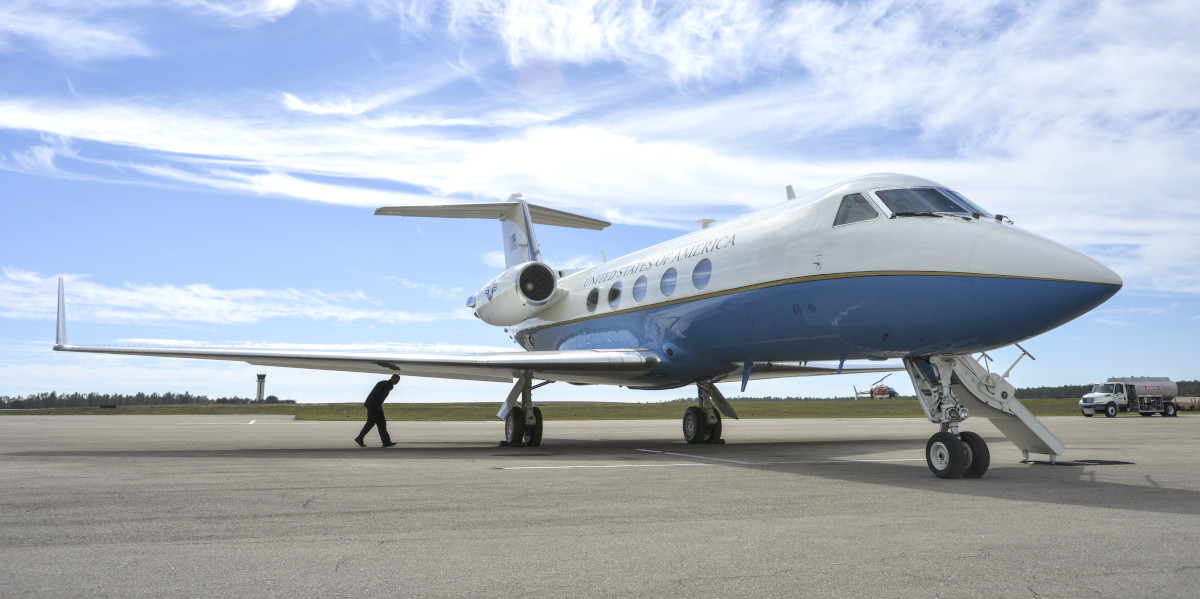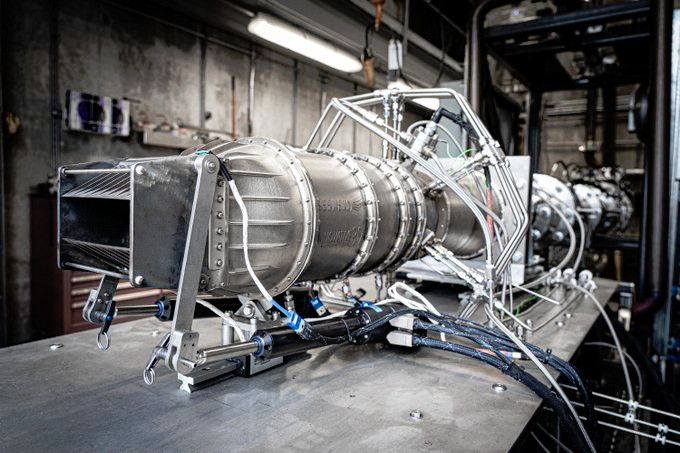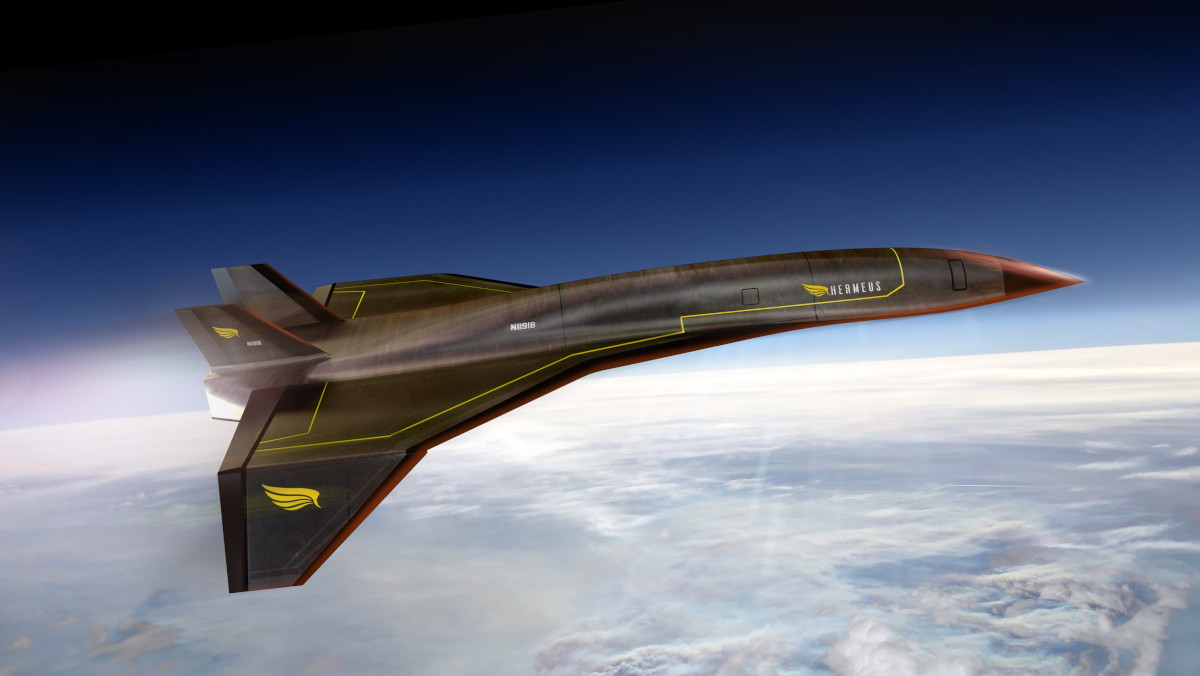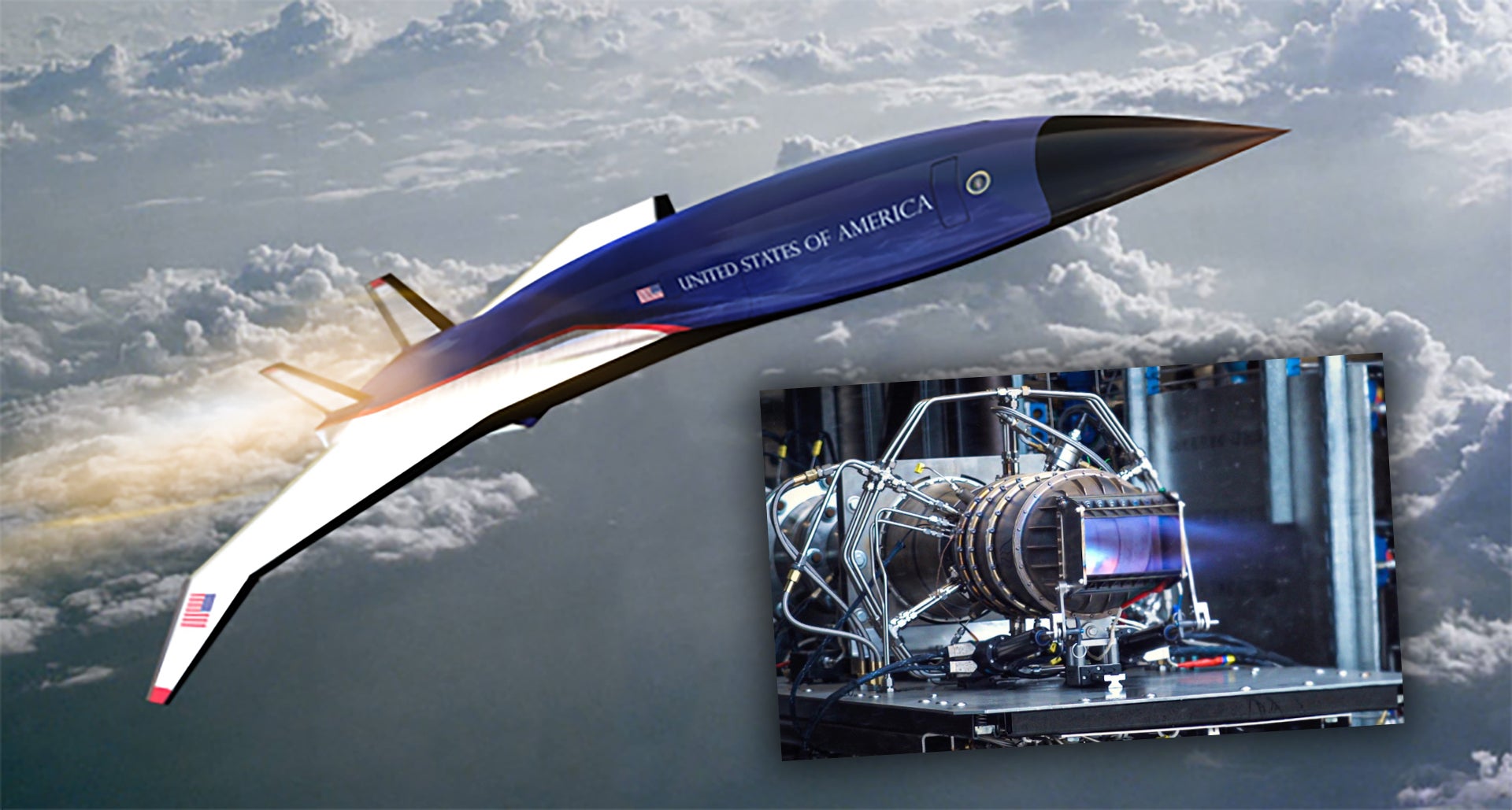The U.S. Air Force has awarded the Hermeus Corporation a contract to support its work on a hypersonic aircraft powered by an advanced combined-cycle jet engine. The service says that the deal could be a stepping stone to fielding a high-speed plane for VIP transport and other missions in the future.
Hermeus announced that it had secured the contract on Aug. 6, 2020, through AFWERX, a technology incubator the U.S. Air Force stood up in 2017. The deal is worth approximately $1.5 million and will focus on exploring design concepts for a business jet-sized hypersonic executive transport aircraft capable of seating between nine and 19 passengers, Steve Trimble, Aviation Week‘s Defense Editor and friend of The War Zone, added in a Tweet.
“Early integration of unique Air Force requirements for high-speed mobility and evaluation of interfaces between high-speed aircraft and existing communications, airport, and air traffic control infrastructure lays the groundwork for a seamless transition to service,” Hermeus’ press release said. “Additionally, Hermeus will prepare test plans to reduce technical risk associated with these modifications to support Air Force requirements.”
The Atlanta-based aviation startup will be working on this with the Air Force’s Presidential and Executive Airlift Directorate, which is part of the Air Force Life Cycle Management Center at Wright-Patterson Air Force Base in Ohio. This office is most notably responsible for managing the fleet of two Boeing 747-based VC-25A Air Force One aircraft and supporting the acquisition of two newer replacement VC-25B jets, which are also modified Jumbo Jets. It also oversees the 757-based C-32A Air Force Two fleet, as well as the service’s 737-based C-40 Clippers and various other business jet and turboprop passenger transport types.

“Leaps in capability are vital as we work to complicate the calculus of our adversaries,” Air Force Brigadier General Ryan Britton, the Program Executive Officer for Presidential and Executive Airlift, said in a statement. “By leveraging commercial investment to drive new technologies into the Air Force, we are able to maximize our payback on Department of Defense investments.”
Hermeus, which was founded in 2018, has been focused on the development of a hypersonic passenger jet primarily for the commercial market. At the core of its design is a combined-cycle jet engine, which it first tested in February.
Combined cycle engines blend together the capabilities of traditional jet turbines and ramjets or scramjets, the latter of which can only reliably function at high speeds. Typically, ramjet or scramjet-powered hypersonic vehicles have used rocket boosters to get to them to the desired speed initially.
“Using our pre-cooler technology, we’ve taken an off-the-shelf gas turbine engine and operated it at flight speed conditions faster than the famed SR-71,” Glenn Case, Hermeus’ Chief Technology Officer, said in a statement. “In addition, we’ve pushed the ramjet mode to Mach 4-5 conditions, demonstrating full-range hypersonic air-breathing propulsion capability.”


In principle, a combined cycle engine would allow an aircraft to take off like any other jet using existing runways, then accelerate to hypersonic speed during the middle portion of its flight, and then land on the other end, again without the need for any specialized infrastructure. For slower portions of flight, it would use its standard jet engines before switching over to a ramjet system. This is the same concept behind Lockheed’s ‘SR-72’ Blackbird successor that is currently in development. Being able to operate hypersonic aircraft from existing airports would have immense benefits for commercial airlines and charters services. A design capable of lower-speed operation could also help assuage concerns about disruptions to civilian communities along flight routes, which have historically impeded the growth of supersonic commercial air travel.
“At Mach 5 – over 3000 miles per hour – flight times from New York to London will be 90 minutes rather than 7 hours,” Hermeus’ press release on its Air Force contract declared. “High-speed aircraft offer disruptive differentiation where the main metric is speed, rather than plush seats, which has historically resulted in economic expansion. Mach 5 aircraft have the potential to create an additional two trillion dollars of global economic growth per year, unlocking significant resources that can be utilized to solve the world’s great problems.”

All of this also applies to military applications, something The War Zone
has explored broadly in the past. VIP airlift has long been one obvious role for a high-speed business jet-sized aircraft, which would enable senior officials to crisscross the globe faster and more efficiently, as well as travel longer distances on shorter notice.
A hypersonic aircraft in this size class, or even just supersonic one, could be valuable for performing other mission sets, including tactical ones, such as intelligence, surveillance, and reconnaissance (ISR), electronic warfare, and even long-range strike. A combined-cycle engine could enable a version of Hermeus’ design configured for aerial refueling to link with existing tankers, further extending its range capabilities for whatever jobs it might be tasked with.
Of course, the Air Force is still very early on in its work with Hermeus and it’s not clear when that cooperation might yield an actual aircraft of any kind, if it does at all. A contract for less than $2 million is extremely small when it comes to advanced aircraft development. Still, the service has made clear that it hopes to at least leverage the technology the company is working on for future high-speed designs, including for the VIP transport role.
“The Presidential and Executive Airlift Directorate is proud to support Hermeus in making this game-changing capability a reality as we look to recapitalize the fleet in the future,” Air Force Brigadier General Britton said in his statement about the new contract.
It will certainly be interesting and exciting to see what Hermeus develops now as part of its new deal with the Air Force.
Contact the author: joe@thedrive.com
